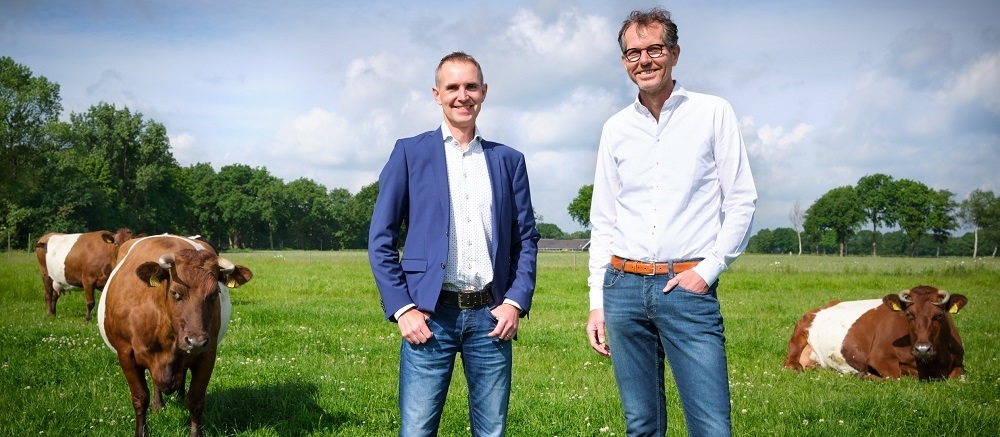
Longread
How livestock farming can contribute to biodiversity
In the nitrogen discussions, much is said about the relationship between livestock farmers and nature. Biodiversity is under pressure in the Netherlands and the rest of the world. The number of species and room for nature is in rapid decline, according to recent data and reports from international organisations such as the FAO and IPBES. Agriculture and livestock farming are frequently named as being responsible for biodiversity loss, but they could also contribute to its preservation. Biodiversity is an integral part of the livestock farming system.

Nature helps
Like climate change, biodiversity is seen as a central theme for the future of the planet, nature and humanity. Biodiversity is essential for the production of food. A growing number of people within the agricultural sector and beyond are aware of this fact. The Ministry of LNV (Agriculture, Nature and Food Quality) stimulates circular agriculture, and we strive to reduce the side effects of our efficient and relatively intensive livestock farming systems to a minimum, for example, by cutting back on importing feedstock for animal feed. New initiatives and insights are also developed. Dairy farmers in the Netherlands use approximately 40 per cent of our land.
An increasing number of dairy farms focus on biodiversity and increase the number of species in their meadows. This leads to a wider variety of plant species, insects, meadow birds and soil life. But it also helps grasslands on dry sandy soils become more drought-resistant.
Help the dairy farmer see where there are opportunities to contribute to biodiversity and what benefits this yields
The dairy livestock sector and dairy chain have also developed a so-called 'Biodiversity Monitor', which shows a dairy business’s impact on biodiversity and reveals options to contribute to biodiversity increase. It also offers a foundation for a rewards and stimulus system for biodiversity.
In crop farming, much attention goes towards experimenting with a larger variety of crops grown in narrow strips as an alternative to growing large areas of the same crop (monoculture). This strip-tilling benefits the diversity of soil organisms and insects, which is, in turn, expected to make crops less susceptible to fungi and plant diseases. Thus, nature helps us produce food with fewer pesticides.
The future is bright for production systems that are in equilibrium with nature. Good for the farmer and for biodiversity.

Genetic diversity in plant and animal species is the basis for our food
When considering biodiversity, most people think of a wide variety of species in nature. However, the food on our plates, the variety of crops, animal species and specific breeds are also part of biodiversity.
A variety of characteristics within a particular species is critical to the ability to adjust to changing living circumstances. This applies to plants and animals in nature but also to farm crops and animals. And, thus, also to pigs, cows and chickens. It is essential that breeding businesses and livestock farmers make optimal use of the genetic variation within species and breeds. And that they use these variations to create an optimal match between the animals’ genetic properties and the circumstances to safeguard the animals’’ well-being and health.
We must use genetic diversity within species for diversity in (future) circumstances
The genetic diversity between and within species forms the basis of sustainable and resilient food systems. Production systems are dependent on local circumstances and on challenges with which we are faced, such as climate change and biodiversity loss. We expect to see a greater variation in production systems in the future, which call for (combinations of) well-adapted species and breeds. The animal must match the farm system and vice versa. An extensive, nature-inclusive livestock farming system requires different crops and animals than a more concise business model with more external inputs.
Area-specific development in the livestock sector
The regional climate, environment and biodiversity goals will determine what shape and how much room livestock farming takes in the future. An area-specific approach may lead to an increased focus on nature-inclusive livestock farming in some areas. More extensive approaches to livestock farming and increased biodiversity call for different cattle than more intensive approaches. Making optimal use of the diversity in crops and farm animals, as well as of the genetic variations within species, for the variety in the circumstances is essential.
Video: Sipke-Joost Hiemstra on the importance of diversity of breeds (in Dutch)
- Unfortunately, your cookie settings do not allow videos to be displayed. - check your settings
Breeding from a broad genetic basis
Conserving a diverse gene pool enables us to better handle future changes in farming systems. Next generations of farm animals must be resilient and healthy, also in circumstances that call for extra resilience, such as summer heat, significant differences in feed quality or increased risk of infectious diseases. Hence, “breeding for diversity” and “breeding for resilience” are critical focal points in Wageningen’s breeding and genetics research.
Moreover, the Netherlands Centre for Genetic Resources safeguards genetic diversity in gene banks for crops, trees, aquatic species and farm animals and advises on sustainable use of the genetic variation between and within species and breeds.
Connect and guide
By considering agriculture and biodiversity as a single, inextricable whole, rather than placing the two opposite one another, we will be able to better and more rapidly manage changes in agriculture and nature management. Maintaining global and national biodiversity is of the essence while simultaneously making optimal use of the genetic variation in crops and farm animals to develop a sustainable and resilient livestock sector and preserve a broad genetic basis for future use. Beneficial for the future of the planet, humans and nature.
